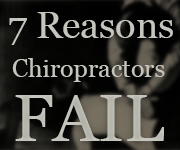
I love the term “Opinion,” it describes ones own thoughts on a subject without actually stating the reasons why or a belief or judgment that rests on grounds insufficient to produce complete certainty. With this in mind I offer up the difference between a Subluxation and a Nonallopathic Lesion.
So I digress a bit, first let’s talk about the title of this blog post. Why is calling a subluxation a nonallopathic lesion, like calling an apple a pomme de terre (potato), well because though they are similar, they are completely two different things. An apple is red and sweet and grows on a tree, while a pomme de terre or potato if you will, more on that in a second, is brown and earthy and grows under the ground.
lesion, like calling an apple a pomme de terre (potato), well because though they are similar, they are completely two different things. An apple is red and sweet and grows on a tree, while a pomme de terre or potato if you will, more on that in a second, is brown and earthy and grows under the ground.
Both taste amazing in a pie and at times can be used interchangeably in certain recipes, but that in and of itself does not make an apple a pomme de terre. Now more on this “pomme” thing, I picked pomme de terre, because it is French for “potato,” but if you break the word down it mean, apple of the earth. You see according to who, what, where and when you use the word, it has the word apple in it, they are two totally different things.
Now, this brings us to the Subluxation – Nonallopathic Lesion segment of our conversation. Although some chiropractic associations and colleges support the concept of subluxation, many in the chiropractic profession reject it and shun the use of this term as a diagnosis. In the United States and in Canada the term nonallopathic lesion may be used in place of subluxation.
 What???
What???
So you are telling me just because you do not agree, that is ok for me to now call an apple a potato? Do you get where I am going with this yet? No? OK, let me go just a little bit deeper, but just for a second. A nonallopathic lesion is defined as, “Nonallopathic lesions, segmental or somatic dysfunction” (739.x) and “Other, multiple, and ill-defined dislocations” (839.x) are used variably to indicate a diagnosis of chiropractic subluxation,” by the ICD-9 codes.
While in 1909, B.J. Palmer wrote that: “Chiropractors have found in every disease that is supposed to be contagious, a cause in the spine. In the spinal column we will find a subluxation that corresponds to every type of disease. If we had one hundred cases of small-pox, I can prove to you where, in one, you will find a subluxation and you will find the same conditions in the other ninety-nine. I adjust one and return his functions to normal… . There is no contagious disease… . There is no infection… . There is a cause internal to man that makes of his body in a certain spot, more or less a breeding ground [for microbes]. It is a place where they can multiply, propagate, and then because they become so many they are classed as a cause.”
–B.J. Palmer, The Philosophy of Chiropractic, V. Davenport, IA:Palmer School of Chiropractic; 1909
Now do you see where I am going with this? Though the two are attempting to describe the same thing, they are two completely separate things, just like an apple and a potato. In chiropractic, vertebral subluxation is a set of signs and symptoms of the spinal column. There is a visceral component to the definition. I maintain that a vertebral subluxation complex is a dysfunctional biomechanical spinal segment, which is fixated, but additionally the dysfunction actively alters neurological function, which in turn, I believe, opinion time, to lead to neuromusculoskeletal and visceral disorders.
 The chiropractic vertebral subluxation complex
The chiropractic vertebral subluxation complex
has been a source of controversy since its inception in 1895 due to the lack of so called empirical evidence for its existence and effects on health and disease.
Vertebral subluxation can negatively affect general health by altering the neurological communication between the brain, spinal cord and peripheral spinal nerves. Although individuals may not always be symptomatic, I believe that the presence of a vertebral subluxation is in itself justification for correction via spinal adjustment. (Hint, Clue – Next Blog Post)
So you see, though nonallopathic lesion may be used in place of the word subluxation, it does not make it right. I understand that you might have a problem with my rational or that you might just outright disagree with me, but unless you understand and I mean truly understand what B.J. Palmer meant when he said, “Chiropractors have found in every disease that is supposed to be contagious, a cause in the spine,” then we will never agree. Because in the end, you might be all right with putting “Pomme De Terre” in your “Apple Pie,” but I am NOT.
Chiropractically Yours,
Dr. Carey N. Pabouet-Sigafoose




